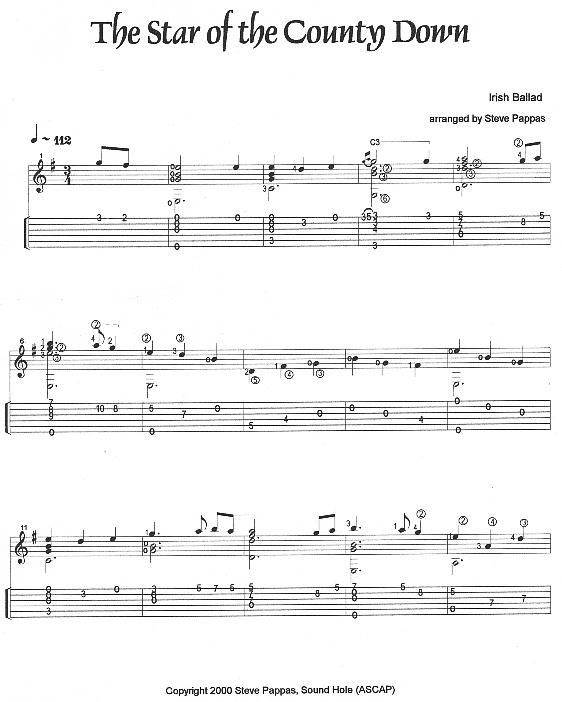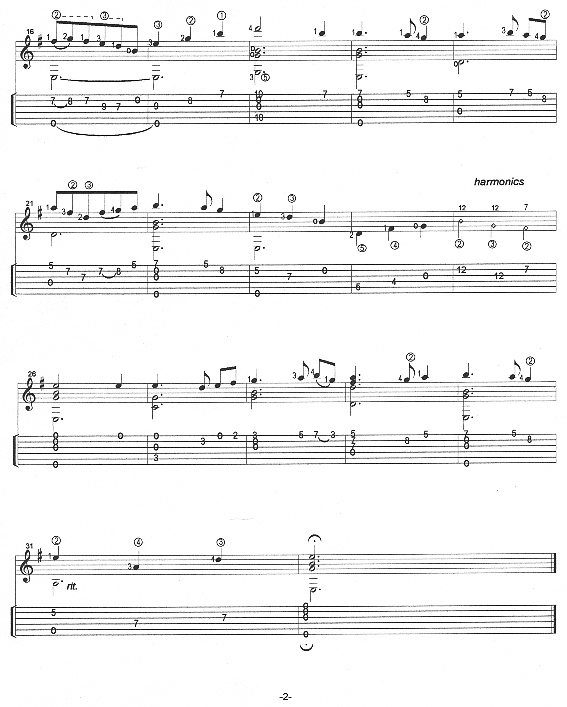The first time I heard "The Star Of The County Down" (which can be heard on my 2001 CD "Refuge") was several years ago on a PBS special entitled "Celtic Harpestry". I was so moved by the performance of this hauntingly beautiful melody, that I had to arrange it for the guitar. The song is an Irish ballad about a man's desire to be with Rosie McCann from the County Down. My arrangement is for solo fingerstyle guitar. It could be played on steel string as well as nylon string guitar. Before I discuss the techniques used to play the piece, I'll clear up the hieroglyphics found on the music.



 represents a hammer-on or a pull-off (Example: measure 16).
represents a hammer-on or a pull-off (Example: measure 16).Of course, an exhaustive study of right hand technique is beyond the scope of this presentation. However, I hope that I did my best to help you get started in the right direction. If you are interested in fingerpicking, you may visit my web site at pappasmusic.com and I'll give you some suggestions of methods, exercises, etc. to help further your study. I hope you have fun learning and playing this arrangement. That's what this is all about.
Steve Pappas is a guitarist, composer and teacher from Ohio specializing in fingerstyle guitar who believes in daily practice, and expressing emotions and feelings through his playing.
His latest CD is entitled "Refuge", a blend of Folk, Spanish, Classical, Latin and Rock influences.